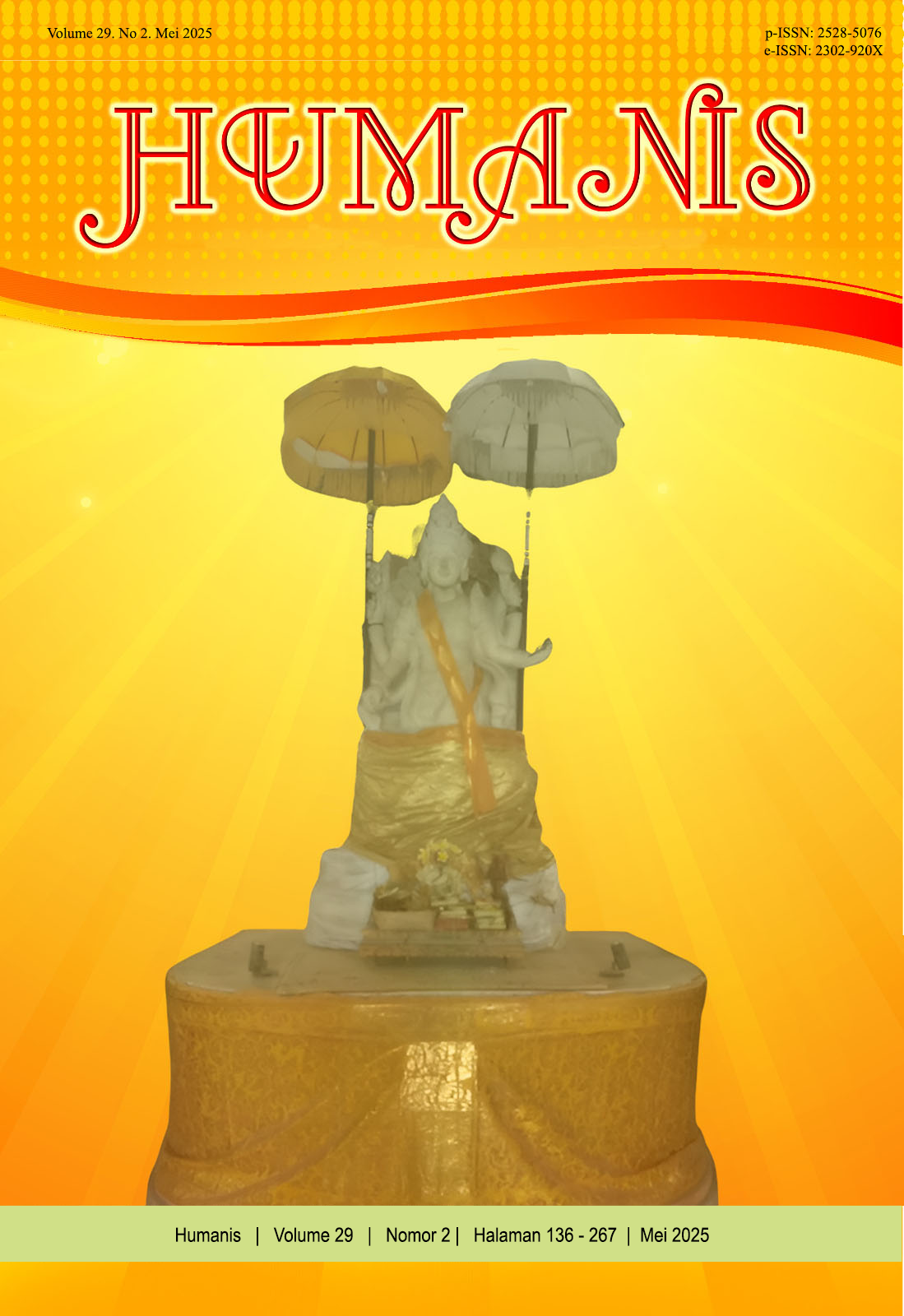Rekonstruksi Bisma di dalam Cerpen “Bisma” Karya Putu Wijaya
Abstract
The character of Bhishma in the Mahabharata wayang tradition is known as a central figure who ultimately causes the downfall of the Kingdom of Hastinapura. Putu Wijaya reconstructs this character in his short story “Bisma” by blending imagination with the social realities of contemporary Indonesian society. Bhishma’s greatness and controversy are reimagined through Putu Wijaya’s distinctive style, which reflects the current social conditions. This reconstruction gives rise to a ‘new’ Bhishma—one that resonates with today’s readers. This study aims to examine how the character of Bhishma is reinterpreted within the modern Indonesian social context through a sociological approach to literature. The method used is library research, employing reading, observation, note-taking, and interpretive techniques. The findings reveal that Bhishma is portrayed as both an imaginative figure and a societal idol, particularly for the urban community of Jakarta, reflecting the contemporary need for role models amidst ongoing social dynamics.
Downloads
References
Ariyoga, I Nyoman. (2019). “Nilai Pendidikan Agama Hindu Dalam Lontar Swargarohana Parwa”. Jurnal Satya Widya: Jurnal Studi Agama, 2(1), 67-81.
Eagleton, Terry. (1983). Literary Theory An Introduction. Basil Blackwell Ltd.
Endraswara, Suwardi. (2008). Metotologi Penelitian Sastra, Episemologi, Model, Teori, dan Aplikasi. MedPress.
Hawkes, Terence. (1978). Structuralism and Semiotics. Methuen & Co.Ltd.
Islami, Dina. (2022). “Peranan Kearifan Lokal Dalam Pendidikan Karakter”. Dimuat di dalam Jurnal Thesisi Commons, 29 Mei, hal 3.
Junus, Umar. (1981). Mitos dan Komunkasi. Sinar Harapan.
Mimin, Elka. (2023). “Pentingnya Nilai-Nilai Kearifan Lokal Suku Ngalum Ok Dalam Kurikulum PAUD Guna Menghasilkan Siswa Berkepribadian Unggul”. Jurnal Jurnal Obsesi: Jurnal Pendidikan Anak Usia Dini, 7(4), 4500-4512.
Mulyati, Eti dan Iyus Rusliana. (2020). “Tokoh Bisma Dalam Dramatari Amba Bisma”. Dimuat dalam jurnal Panggung. 30(1).
Nurcahyawati, Enny & Arifin, Mohammad. (2022). “Manifestasi Transformasi Nilai-Nilai Ajaran Islam Dalam Tokoh Wayang Kulit Pandawa Lima Pada Cerita Mahabharata”.Jurnal Dirosah Islamiyah, 4(2), 304-321.
Pradopo, Rachmat Djoko. (1990). Pengkajian Puisi. Gadjah Mada University Press.
Pradopo, Rachmat Djoko. (2002). Kritik Sastra Indonesia Modern. Gama Media
Randya, M. (2006). “Telaah Karakterologi dan Etika Tokoh Bisma Dalam Pewayangan Jawa”. Dimuat dalam Harmonia Jurnal Pengetahuan dan Pemikiran Seni. Januari-April, 7(1).
Ratna, I Nyoman Kutha. (2013). Glosarium: 1.250 Entri Kajian Sastra, Seni, dan Sosial Budaya. Pustaka Pelajar.
Sumawan, I Gede Agus. (2023). “Nilai-Nilai Kepemimpinan Hindu Dalam Bisma Parwa” Dimuat dalam jurnal Widyalaya: Jurnal Ilmu Pendidikan. 4(2).
Teeuw, A. (1983). Membaca dan Menilai Sastra. Jakarta: Gramedia.
Teeuw, A, (1984). Sasra dan Ilmu Sastra Pengantar Teori Sastra. Pustaka Jaya
Triyogo, YB Rahno. (2023). “Spiritualitas Bisma Dewabrata”. LAKON, Jurnal Pengkajian & Penciptaan Wayang, 20(1), 38-49.
Otorowati, Sri; Sukristanto; Israhayu, Eko Sri. (2018). “Nilai Pendidikan Karakter Dalam Novel Mahabarata dan Novel Bisma Dewabrata: Sebuak Kajian Intertekstual”. The 8th University Research Colloquium 2018 Universitas Muhammadiyah Purwokerto, 348-353.
Wijaya, Putu. (1992). Gres. Balai Pustaka.


















